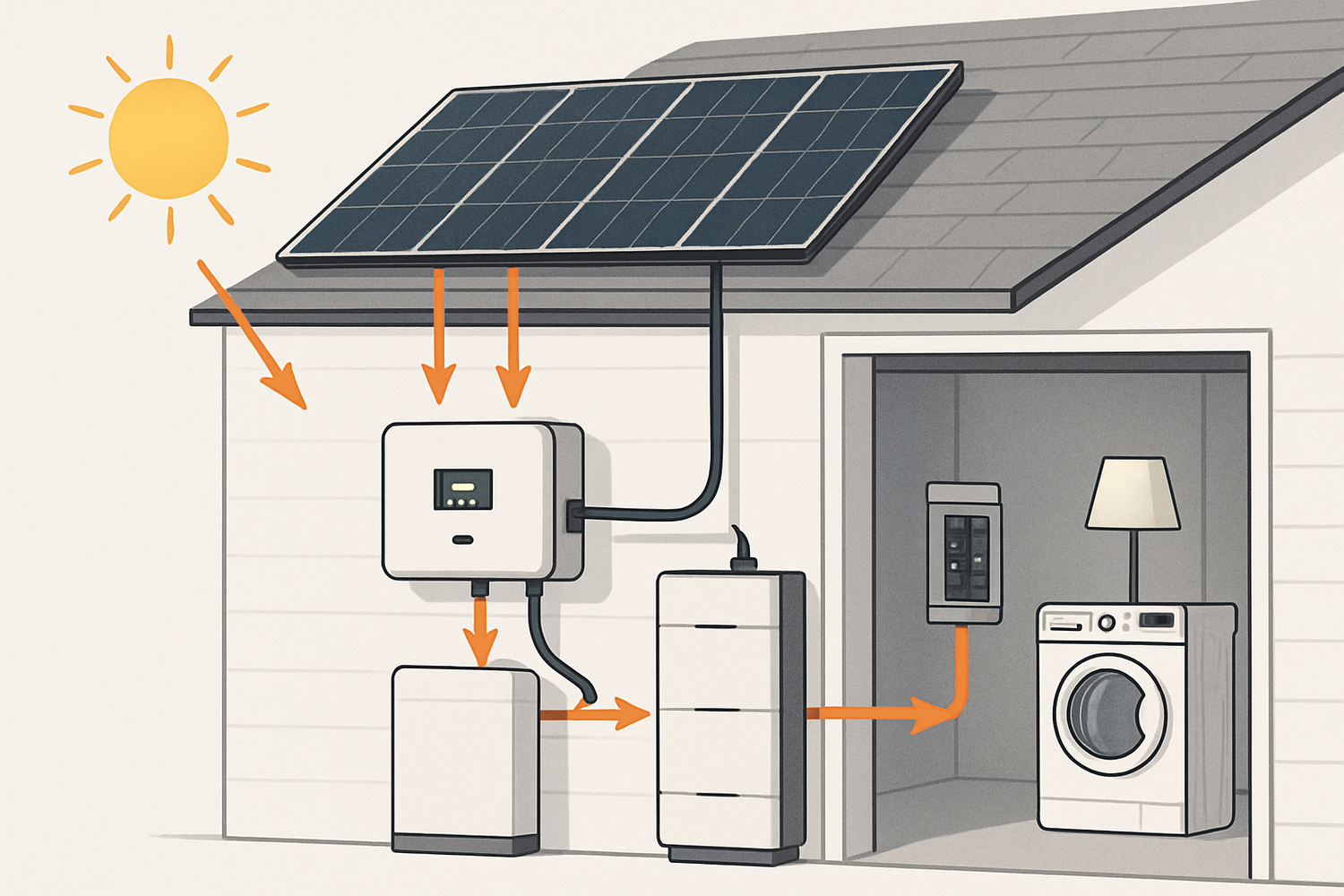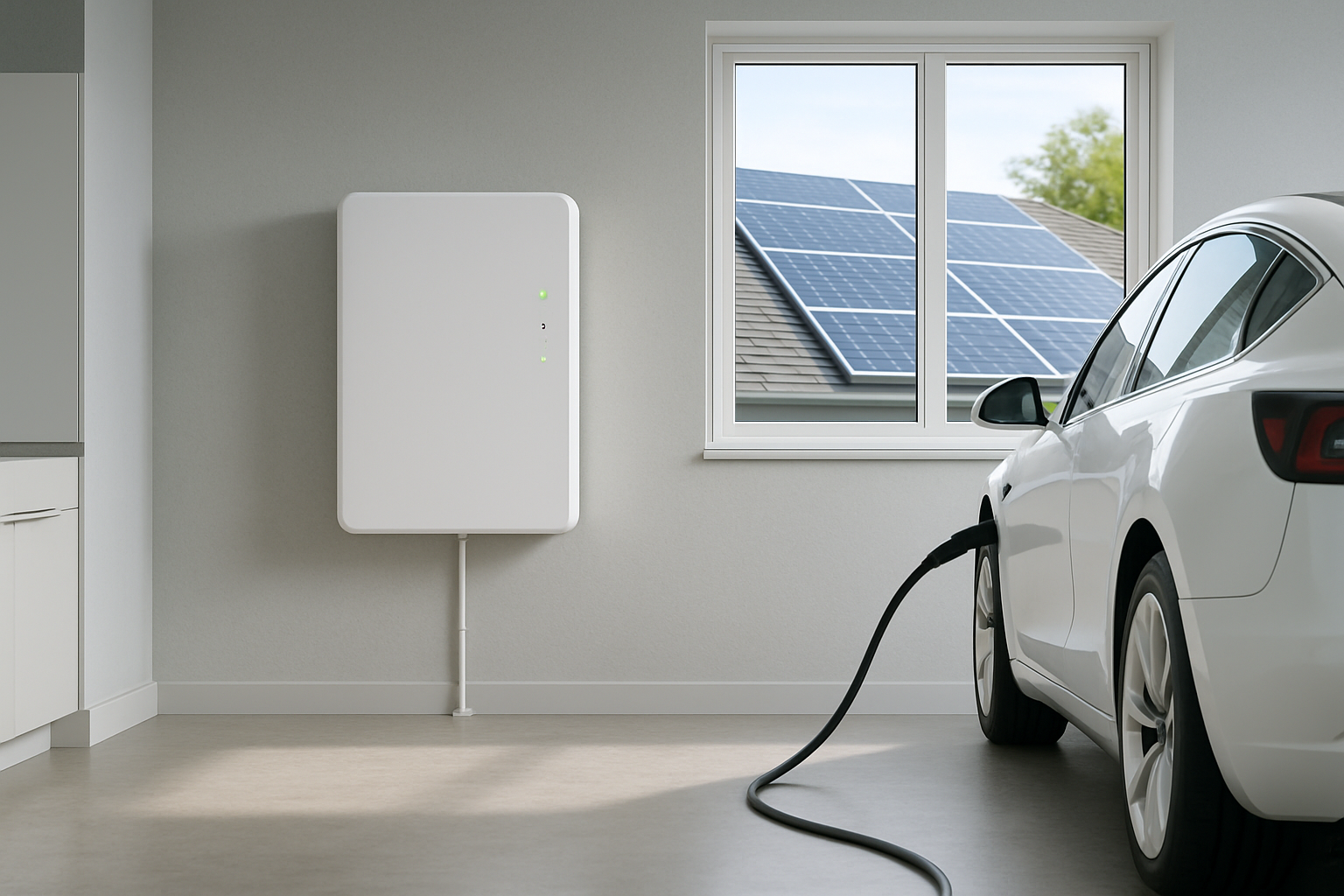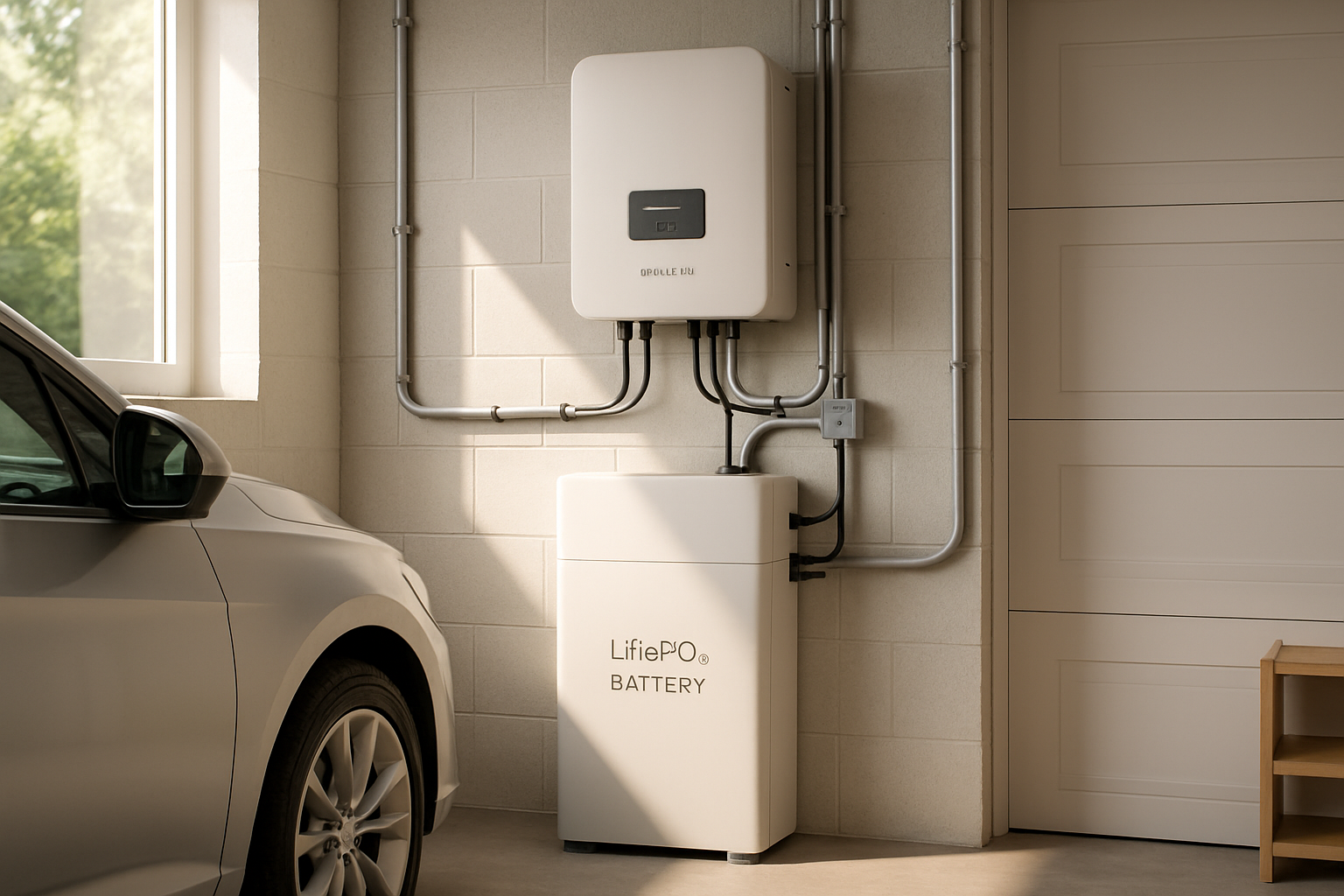A solar battery storage system allows you to capture the sun's energy and use it anytime, day or night. This capability is fundamental to achieving greater energy independence and ensuring a consistent power supply. Setting up a system involves understanding its core parts, calculating your specific needs, and assembling them correctly. This blueprint provides a clear path for establishing a robust residential solar storage solution.
Understanding the Core Components
A complete solar energy storage system is more than just panels and batteries. Each component plays a distinct role in creating a functional and efficient setup. Knowing these parts helps in making informed decisions for your specific application.
Solar Panels and Batteries
The foundation of any system begins with solar photovoltaic (PV) panels, which convert sunlight directly into electricity. This DC power can then be stored in a battery bank. For residential solar storage, Lithium Iron Phosphate (LiFePO4) batteries are a leading choice due to their long cycle life, inherent safety, and high efficiency. They come in various capacities, such as a 100Ah or 200Ah lithium battery, and voltages, typically 12V or 48V, to suit different scales of energy needs.
Inverters and Balance of System
An inverter is the system's control center. It converts the DC electricity from the panels and battery into AC electricity that powers your home appliances. Hybrid inverters are particularly useful as they can manage inputs from solar panels, the battery bank, and the utility grid simultaneously. The remaining components are collectively known as the Balance of System (BOS). According to the International Energy Agency's Solar Energy Perspectives report, this includes all necessary wiring, fuses, circuit breakers, and mounting hardware that connect and protect the entire setup.
Sizing Your System for Optimal Performance
Proper system sizing is critical for meeting your energy demands without overspending on unnecessary capacity. A system that is too small will fail to provide adequate power, while an oversized one is not cost-effective. The process begins with a detailed assessment of your electricity consumption.
Conducting a Home Energy Audit
The first step is to calculate your daily energy usage in kilowatt-hours (kWh). Create a list of all the appliances you intend to power. For each one, note its power consumption in watts and the number of hours you use it per day. Multiplying these two figures gives you the daily energy consumption for each device. Summing them all up provides your total daily kWh requirement.
| Appliance | Power (Watts) | Daily Usage (Hours) | Daily Energy (Wh) |
|---|---|---|---|
| LED Lights (x5) | 50 | 6 | 300 |
| Refrigerator | 150 | 8 (cycle time) | 1200 |
| Laptop | 65 | 5 | 325 |
| Television | 100 | 4 | 400 |
| Total | 2225 Wh or 2.225 kWh |
Calculating Battery and Solar Array Capacity
Once you know your daily kWh needs, you can size your battery bank. For a LiFePO4 battery, you can use nearly its entire capacity, so a high depth of discharge (DoD) of 90-100% is common. To determine the required amp-hours (Ah), use the formula: (Daily kWh × 1000) / (Battery Voltage × DoD). For 2.225 kWh of daily use with a 48V battery at 90% DoD, you would need approximately 51.5 Ah of storage. Next, size your solar array to replenish this usage. The required solar wattage is your daily kWh divided by the local peak sun hours. If you have 4 peak sun hours, you would need at least 556 watts of solar panels (2225 Wh / 4 hours).
The Installation Process: An Overview
Installing a solar battery storage system requires careful planning and attention to safety. While some components are suitable for a DIY approach, complex wiring and grid connections often require professional expertise.
Disclaimer: This information is for educational purposes only and does not constitute professional installation advice. Always adhere to local electrical codes and consider consulting with a qualified installer.
Location, Safety, and Mounting
Select a cool, dry, and well-ventilated location for your inverter and batteries, away from living spaces. Proper ventilation is crucial for electronic components to prevent overheating. Mount your solar panels securely on your roof or a ground mount, ensuring they are free from shading. All wiring should be correctly sized to handle the electrical currents, and safety devices like fuses and breakers must be installed to protect against short circuits and overloads.
Component Connection and Commissioning
The components are typically connected in a specific sequence. The battery connects to the inverter, the solar panels connect to the inverter's PV input, and the inverter's AC output connects to your home's electrical panel. Once everything is wired, the system must be commissioned. This involves configuring the settings on your inverter to match the specifications of your battery bank, such as setting the correct charging and discharging parameters. This step is vital for ensuring the safety and longevity of your batteries.
Maximizing System Lifespan and Efficiency
A well-designed system is only the beginning. Proper management and maintenance ensure you get the most out of your investment for years to come. As the U.S. Department of Energy's Solar Futures Study highlights, energy storage is essential for stabilizing the grid as more renewables are deployed, and efficient home systems contribute to this goal.
Understanding Key Performance Metrics
Familiarize yourself with metrics like State of Charge (SoC), which is the battery's current charge level, and Depth of Discharge (DoD), the percentage of capacity that has been used. While LiFePO4 batteries can handle deep discharges, avoiding consistently draining them to 0% can extend their lifespan. The C-rate indicates how quickly a battery is charged or discharged. For a comprehensive look at these metrics, the ultimate reference on solar storage performance offers detailed explanations to help you optimize your system's operation.
Maintenance and Smart Management
Maintenance for a solar storage system is generally low. It involves periodically cleaning your solar panels to remove dust and debris, checking that all electrical connections are tight, and monitoring your system's performance through its software interface. In grid-tied setups, you can use smart energy management features in your hybrid inverter to prioritize self-consumption of solar power or shift energy usage to off-peak hours to reduce electricity bills.
Your Path to Energy Independence
Building a solar battery storage system is a significant step toward managing your own energy production and consumption. By carefully selecting components, accurately sizing the system to your needs, and following a structured installation process, you can create a reliable and efficient power solution. This setup not only reduces reliance on the grid but also provides a dependable backup power source, giving you control over your energy future.
Frequently Asked Questions
How long will a solar battery last?
LiFePO4 batteries, a common choice for solar storage, typically offer a long lifespan, often rated for thousands of charge cycles. This can translate to 10-15 years or more of reliable service, depending on usage patterns and operating conditions.
Can I add more batteries to my system later?
Yes, one of the advantages of modern solar storage is scalability. You can often expand your battery bank by adding more modules. It is important to ensure the new batteries are compatible with your existing ones and that your inverter can handle the increased capacity.
What is the difference between an off-grid and a grid-tied battery system?
A grid-tied system remains connected to the utility grid, allowing you to draw power when needed and potentially send excess solar energy back. An off-grid system is completely independent of the utility grid and relies entirely on solar generation and battery storage for power.





Leave a comment
All comments are moderated before being published.
This site is protected by hCaptcha and the hCaptcha Privacy Policy and Terms of Service apply.